Where did the Toronado design come from? Here is a summary by a designer who was there.
by Dick Ruzzin –
I worked in the Oldsmobile Studio at General Motors Styling throughout the entire 1966 Oldsmobile Toronado design program. This is a factual account of the design steps that were taken to create the Toronado. Everything here was verified by Stan Wilen, Chief Designer of the Oldsmobile Studio at the time. An account with these facts and more, authored by me, is in the Oldsmobile Museum in Lansing, Michigan.
There were five designers in the Oldsmobile Studio:
- Stan Wilen Chief Designer and Studio Head.
- David North, Assistant Chief Designer
- Donald Logerquist, Senior Designer
- Frank Munoz, Designer
- Dick Ruzzin, Junior Designer
The rest of the Studio Staff was made up of the following:
- Two Studio Engineers under the direction of William Mullaly.
- Seven Sculptors under the direction of Leonard Sczesniak.
All Oldsmobile Studio personnel contributed daily in many ways to the creation of the 1966 Oldsmobile Toronado. The sculptors had an especially difficult challenge in developing the surfaces on the body side.
Don Logequist’s sketch of what would ultimately become the design theme for the Toronado was first applied to the 1965 Delta clay model. We ran out of time to work on the future Toronado program, so to continue the design process and lock up the theme for the Oldsmobile Toronado, Chuck Jordan Executive Design Director, had us send our sketches, engineering drawings and our barely started clay model based on the Camaro/Firebird platform, to an Advance Design Studio. They were to continue work on the theme. The design development was to continue there, just down and across the hall from the Oldsmobile Studio for about seven weeks. Frank and I were frequently sent down by Stan to see the progress on the model.
The studio could not do much on the model as they did not have many modelers and a new platform was being developed that the model would have to adjust to. We had found a theme, Don’s sketch, before the program had officially started so Chuck Jordan’s action was to establish Don’s design theme as the direction for the Toronado while Buick and Cadillac started looking for theirs.
I recall the line shown on the Red Rendering of the car remained on the rear quarter and there was a low wraparound tailamp on the model when it returned to Oldsmobile Studio. The return was triggered by the finalization of the new corporate E car front and rear drive platform that would be then used on the Toronado, Riviera and Eldorado. Our clay model was returned and reconfigured to the new E car platform dimensions. We then got serious about developing the design as it became an official production program for Oldsmobile.
The Red Rendering
The Red Rendering, a large colored side view sketch was done by Dave and Don with help from George Gadda and Orville Selders our engineers before the model left for the advanced studio, it was seen as the design spirit that would sustain the program. Only the front fender profile, the line on the side and the sweeping A Pillar are to be seen on the final design. There was a horizontal line on the rear quarter and the large deep wheel flares were not shown on the Red Rendering, front or rear.
The First Sketch
Don Logerquist created the very first sketch of the Toronado theme. It was first modeled on the passengers side of the full size 1965 Delta clay model. What would later be the final Toronado rear quarter and large wheel flares were clearly delineated on this sketch and on the Delta clay model. The sketch was large on a sheet of velum using black marker, Prismacolor pencil and blue-gray and pale yellow pastel. Don’s theme would later be restored by Bill Mitchell and it would become the final design to be used on the 1966 production Toronado.
Front Design
Stan Wilen wanted the front of the car to be a wide slot that was inspired by the Firebird lll, with the slots above and below the headlamps as sketched by Dave North. This “Barbell” theme would be used on the following Oldsmobiles we were soon to design, front and rear.
Side Design
Dave North had done a low double line theme on an advanced Pontiac A car body side in another studio that Bill Mitchell liked because it reminded him of a “Frame”. Stan removed the lower line and took the upper line over the wheels. He was looking for a theme that he could also execute on future Oldsmobile designs. His idea was that all future Oldsmobiles would include some design features from the Toronado, it was to become the Oldsmobile image car.
Stan worked with Frank Munoz to develop the very elegant and simple upper and side window shape on the full-size clay model. The design was evolving very quickly at this point and being very well accepted by management.
The front fender profile came from a scale model in Chuck Jordan’s office that he showed to all of the designers in Oldsmobile Studio. The front fender was shown on the Red Rendering.
Dave had the front fender peak flow into the A Pillar. It had to be reduced in scale because it was too strong a statement for the three E cars as it could be identified as a common feature. This would not work as the three E cars were being designed to be as different as possible in spite of many shared components.
Rear Design
Oldsmobile Studio finally saw the Buick and Cadillac version of the E cars in the first show in the secure outside Styling Patio next to the Dome. Frank and I thought that the Buick was a speed shape version of the first Riviera and that the Cadillac was a collection of Cadillac cliches very well put together. We were very proud of the Toronado and as a comparison to the other two cars we felt that it was the newest and most unique design approach. It certainly proved through time to be so. The other two cars were also to be seen as outstanding but the Toronado was a new design solution that had never been seen before.
The rear of the Toronado clay model was seen by Styling management during the outside review to be weak in comparison to the Buick and Cadillac. Stan Wiley assigned Frank and I the task of finding a design direction for the rear of the car. I remember when he spoke to us that I really felt the responsibility that we had as designers. We needed a theme that was very different than the Buick rear that had a “W” plan view and the Cadillac that had the very thin vertical tailamps. Two opposites. We had to find something completely different than the other two. We already had that in the rest of the design of the Toronado compared to the Riviera and Eldorado.
Frank and I started sketching and the chopped off rear theme came from a picture in a current Road & Track magazine that I found of the German sponsored Ferrari Kamm Back race car. Stan was enthusiastic about it because of it’s simplicity that matched the design of the rest of the car and the fact that it was inspired by a Ferrari. He wanted low, wide and thin tailamps and I sketched a thin grill over them that matched the grill in front of the car. Stan wanted the twin tailpipes like the Ferrari to be stacked vertically. That could not be done bcause the tall slot weakened the rear bumper so they were returned to the original horizontal twin arrangement like the Ferrari and eventually reduced to one on each side. I designed them to be fluted like the Ferrari tailpipes but Oldsmobile could not afford that feature for production.
Rear Quarter and Large Wheel Flares
The large wheel flares were on the original Logerquist sketch that was translated to the 1965 Delta clay model. They were probably seen by Bill Mitchell when the theme was on the Delta model. Stan put the line on the rear quarter of the Red Rendering on the full size Toronado model after the platform was finalized for Oldsmobile, Buick and Cadillac. Mitchell removed the line after a discussion with Dave Holls in Buick Studio about the outboard roof edge line that could not be resolved successfully on the Buick E car.
Bill Mitchell is the one who returned the design to what was shown on Don’s original sketch. The move that Bill Mitchell made is what made the design a standout. He directed me, while I was putting lines on the back end, to remove the quarter line and bring the line on the outboard side of the roof inboard as it moved toward the rear of the car. This was done to match the shared Buick E car roof line, creating the large wheel lip flare on the Toronado rear quarter. Very likely Bill had seen the original quarter theme on the earlier Delta clay model from Don’s sketch so he knew that what he told us to do would work three dimensionally.
The front and rear flare had to be modeled in totally different ways to make them “Look” the same. The front fender stood up vertically and the rear quarter leaned in, just like the model we had seen in Chuck Jordan’s office. The front flare did not have to reach as far as the rear to attach to the fender so it was designed to be more vertical than the rear. The rear flare had to be more horizontal. This approach resulted in both flares being almost the same height in side view with the rear flare being a little taller. This was an aesthetic problem as it was not the way things were normally done, in the end it was the only solution that really worked and it was so well done that people do not notice it.
The Toronado Wheel
The wheel design started in cast aluminum but Oldsmobile could not afford it. They wanted aluminum to reduce the unsprung weight of the front wheel drive U-Joints that were very heavy. The fall back design was the theme on the Cord 810 that Stan liked very much. Stan directed the design of the wheel and Frank Munoz and I did the center cap.
Much more detail about the Genetal Motors E car program, as verified by Stan Wilen, is available in disc form from the Oldsmobile Museum in Lansing, Michigan.
The content in this account was discussed with Stan Wilen and is part of the story of the Fiftieth Anniversary of the 1966 Oldsmobile Toronado that is held by the Oldsmobile Museum in Lansing, Michigan.
This account is dedicated by the author to Stan Wilen, General Motors Design Staff.
Let us know what you think in the Comments.
THE AUTHOR: Dick Ruzzin, Mangusta 8MA670, has spent much of his life designing cars for General Motors. During his career he worked on over 140 car design projects as creative designer, studio head, and Director of Design for GM Europe, in Germany, and Chevrolet, in the United States. His latest book Designing Dreams is available here.

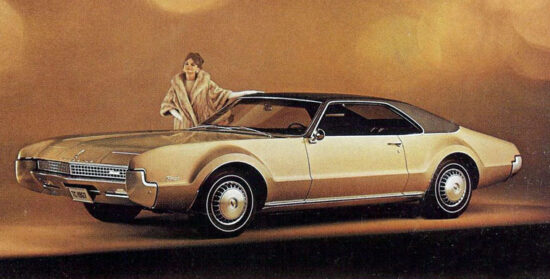

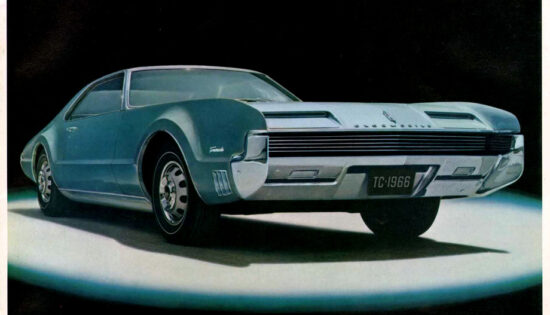
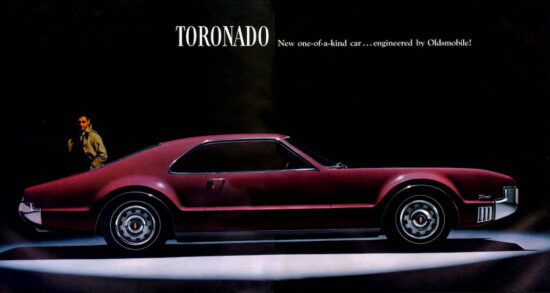
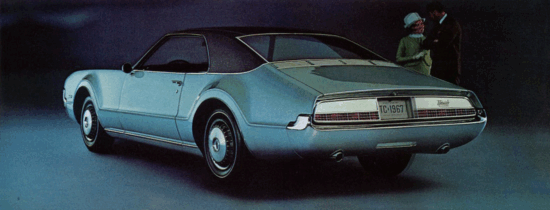
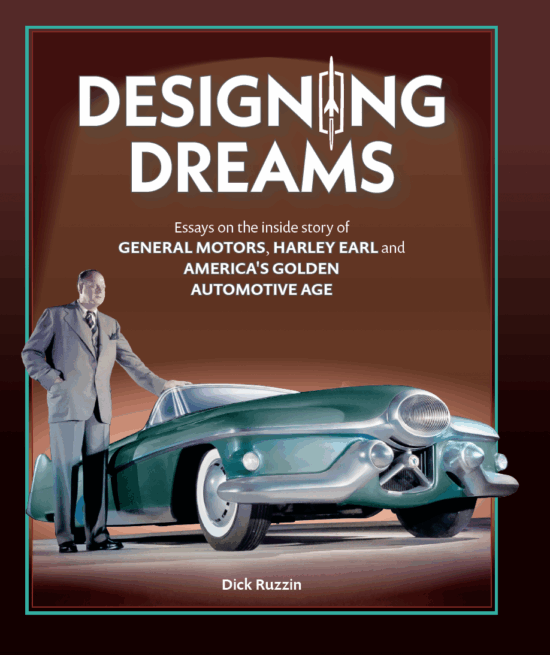
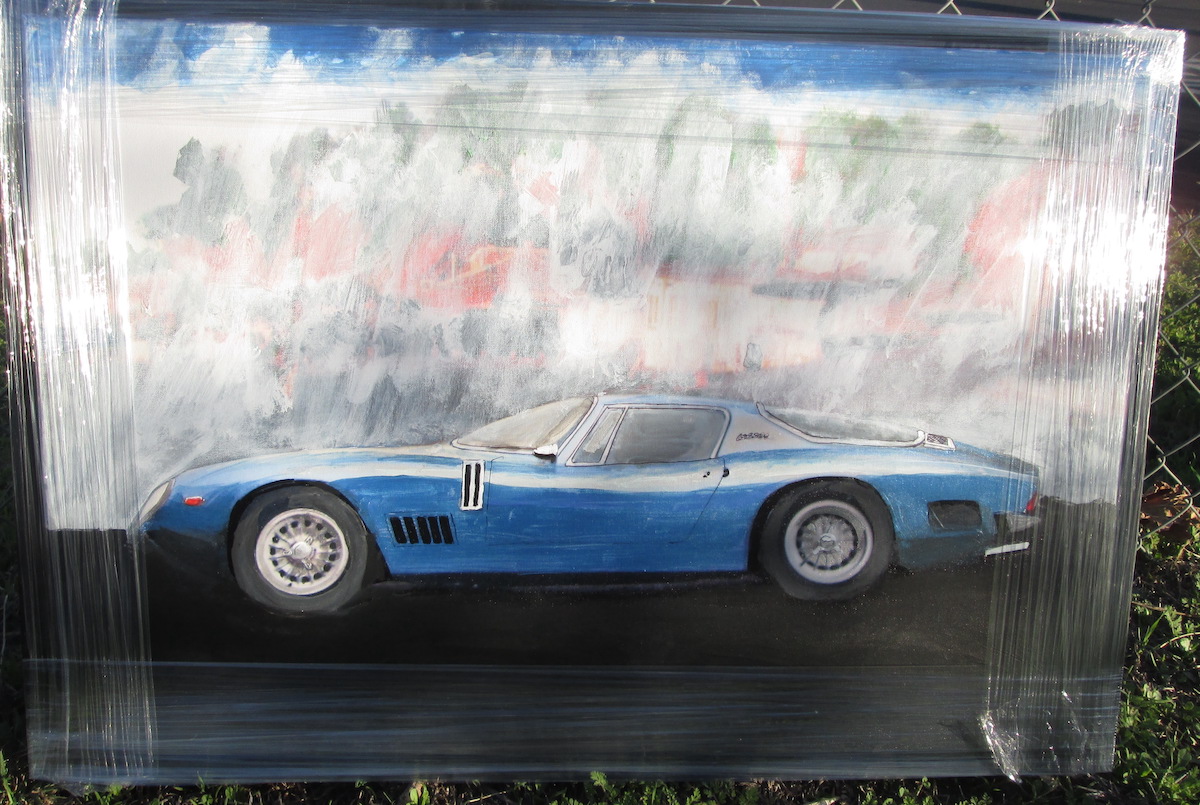

I just read the story again as you have presented it here, apparently Word for Word out of the book. I stand by every word. Stan Wilen, the chief designer of Oldsmobile studio at that time was a talented and creative designer, one of the first to be hired from Harley Earl from Pratt Institute in New York City or stand live. A terrific guy to work for I learned a lot from here and he gave me great responsibility. When I was reassign after 2 1/2 years to another studio, he told me that he had great reservation about me leaving, but that it would be very good for me as I was going to a terrific studio preliminary design. He was right. In preliminary design I had the opportunity to design the 1967 Pontiac front end, with Internet videos available. From there, I went to CHEVROLET studio for a short time and then on and on. Thank you for printing this. Much of that is in the book along with almost 100 images from the GM Design Archives.
Thank you for the expanded story. The machinations of car design and how things got done in Detroit, particularly in the 50’s and 60’s with some headstrong leaders and renegade innovators is always fascinating.
This description, particularly of the line over the wheels (front vs rear) was intriguing because I’ve always had an impression that the rear end was sagging somehow. This helped me put my finger on it – with the same size edgeline over the rear as the front, the emphasis (in my vision) shifts too much toward the front, and the pure side view looks like its dropped in the rear. The vertical space above the flare edge to the front fender topline is tight (full) but the rear has so much vertical space to the trunkline that it looks diminished and sagging.
Enough about my opinion, it is still a breakthrough car and worthy of tremendous admiration and respect that it even came into being.
A great expose on the Toronado’s styling. That was a a car that excited me and most of my 5th grade classmates! It was really FAR OUT! However, I think some credit is due the engineers who created the unique front drive platform; that’s what made all of this work. My dad was a friend of engineer Andy Watt, who headed the Advanced Engineering Group that developed the front drive system. I remember him showing my dad and me (mostly me!) the power train installed in a cobbled up Cutlass.
Andy helped to fire my passion for great automobiles. And the Toronado is a great one!
You are right about the engineers and they get plenty of credit in the book with a good explanation about the complexity of the platform to allow front and rear wheel drive with many common components. There is also a chapter about the interior design and another chapter about Chief Engineer JOHN BELTZ.
That is what is so wonderful about it. Toronado, that it is not only unique and outstanding in its appearance, but also the platform and all the new technical innovation that appeared on the car made it absolutely a star. It still remains today as described by an English motor magazine as a six passenger GT car. A very rare thing. Thank you for your commentary.
The engineering story of the Toronado is well represented in the book, designing dreams. There is a feature about John Beltz, , the Oldsmobile chief engineer as well as discussion on the relationship of Buick also Oldsmobile and Cadillac engineering as they develop the common platform all of that is presented.
I have always thought that the Toronado is one of the most beautiful car designs from any country.
Mike, I agree. Even today it’s so enticing. A good friend from prep school, his mother bought a new Toronado in 1967. We would take that car out for evening cruises along the Ft. Lauderdale beach. What a thrill to ride in that car.
I have yet to purchase one, but I did purchase a 1970 Eldorado in 1979 and that was another amazing marque with the front wheel drive (8.2 liter).
Thank you very much for putting the book on your site. I guarantee people will not be disappointed as I told the publisher that I wanted people to buy the book simply for the images.
I spent a lot of time picking them out, a lot of sketches and other historic images from the general motors to Design Archives. The images are a lot of fun in each one has a commentary below that explains what it’s all about and why it’s in the book. all from the GM Design Archives.